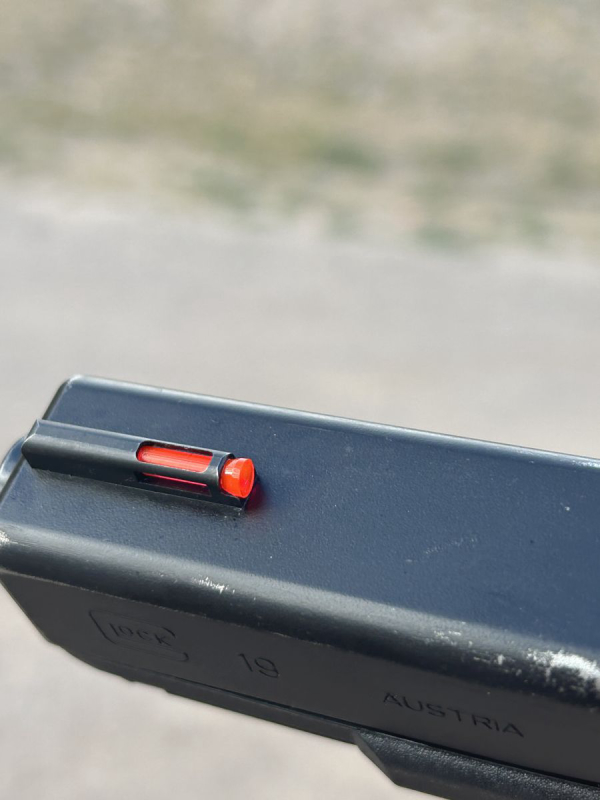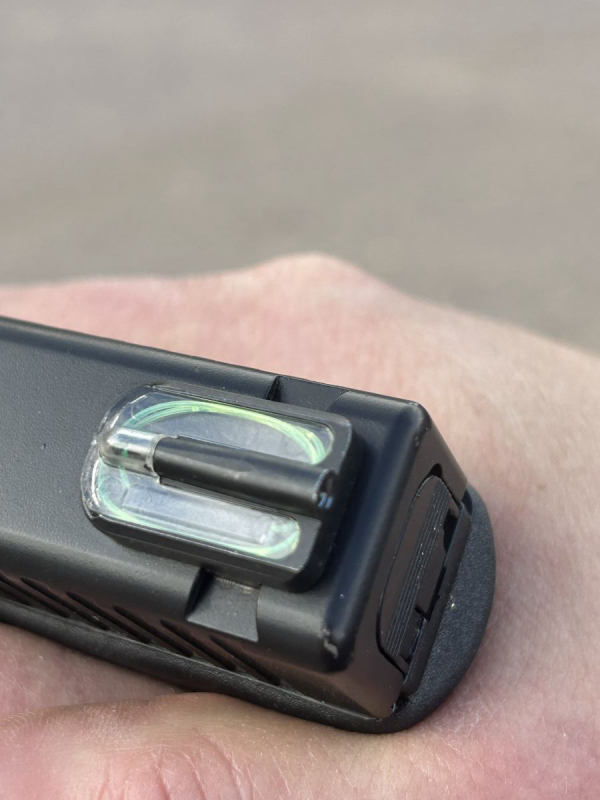Today’s feature comes to us from Greg Moats.
The modern firearms arena is very much a “me too,” bandwagon industry. When a product is successful, it’s not long before rival companies introduce their version of a similar product. Nothing is unique for long in the gun craft. Often, subsequent versions marketed by competing companies, and even updated models of proprietary products aren’t so much “improved” as they are simply “morphed” into “gen-2” of the original item. Thus when something truly unique is conceived, it’s worthy of examination. Such a product is the HIVIZ Shooting Systems FASTDOT H3.

The FASTDOT H3 is the creative child of HIVIZ’s founder, Phil Howe. Phil was one of the early developers of fiber optic sights. At the company’s outset, they primarily manufactured products intended for shotgun use. Being a creative problem solver, Phil developed the MagniOptic technology that was designed to ensure that a cross-dominant shotgunner could only see the fiber optic pipe when using the “proper” eye (right eye for a right-handed shooter and vice versa). If you’ve ever attempted to shoot a shotgun at a flying target off of your weak-side shoulder, you know the difficulty and visual confusion that results.
The FASTDOT H3 is a derivation of the MagniOptic in that it only glows green when the shooter has the proper alignment. Instead of having four points of alignment (the target, the front sight, the rear sight, and the shooter’s eye) which must be verified by the shooter, with the FASTDOT H3 the shooter focuses on the target and the sights verify that they are aligned by glowing bright green. This parallels the ease of using a red dot sight, but due to the comparatively large size of the green dot and it’s being located in the rear sight dovetail, it is much quicker to find. An added benefit is that there is no blocky rear sight nor large red-dot housing that “clutters” the sight picture, there’s just a green dot seemingly “hanging” in space.

Being in the optics business, over the years, Phil has asked Law Enforcement and Military personnel that have been in armed combat detailed questions regarding their encounter. Specifically, he was interested in knowing about their use of their weapon’s sights during combat. Virtually everyone that he has talked to has said that they were too intensely focused on the threat to be looking at their front sight. This appears to be a natural reaction and requires training to overcome or technology to circumvent.
Pointing vs Aiming
The first word listed on my computer’s thesaurus for the verb “point” is “aim.” The first word listed for the verb “aim” is “point.” They’re used interchangeably in colloquial vernacular but they are very different when it comes to shooting successfully. The difference is what you do with your eyes. When your eyes are focused on the target, you are “pointing.” When your eyes are focused on your front sight, you are “aiming.” The combatants that Phil interviewed “pointed” instead of “aimed.” Since red dot and laser technology function by superimposing or projecting an illuminated dot on the target they provide precision accuracy while allowing the shooter to do what comes naturally during a gunfight: focus on the threat. The FASTDOT H3 performs a similar function.
HIVIZ is respected and well known in competitive-shooting circles and sponsors shooters like Jerry Miculek and Max Michel. However, Phil’s intention with developing the FASTDOT H3 was to produce a true CQB sight, not a sight designed to win shooting matches. His desire was to provide a sight that could be acquired quickly while providing adequate accuracy at combat distances of seven to ten yards while allowing the shooter to focus on the threat.
I spoke with a federal law enforcement training officer that HIVIZ used during the beta testing phase of the FASTDOT H3. According to the officer, their agency seeks to develop shooting skills while in a state of duress; they emphasize high-stress simulations during their training. His experience validates the feedback that Phil has gathered that while shooting under stress, almost everyone focuses on the threat, not their sights. He feels that the FASTDOT H3 is a step between iron sights and a red dot. Many of his students that are issued red dot mounted firearms have a slight hesitation on their first round in a string of fire as they visually “find the dot.” This hesitation is an issue which can be overcome with training and practice, but few agencies have the resources of time and money to ensure that mastery is achieved. Virtually every student that has used his FASTDOT H3 mounted gun shoots their first shot quicker than when using a red dot mounted firearm.
How it Works
The front sight is approximately a one-inch length, red fiber optic pipe. It along with the rear sight contain tritium which allows for low light scenarios. The rear sight “housing” fits into the existing dove tail of the handgun and has flexible green fiber optic material wrapped around the sight that feeds into a tube which encases a lens. Calling on their MagniOptic technology, the rear lens must be aligned with the front sight to allow the light that is transmitted through it to be visible to the shooter. This light is illuminated by the green fiber optic material and hence, when properly aligned, the green dot is visible, when not aligned the dot remains black. According to Phil, since tritium is involved, the NRC requires extensive testing to ensure full encapsulation. This testing includes firing 5000 rounds and drop testing to verify the integrity and ruggedness of the sight’s housing.
Personal Observations
After test-shooting the sights I can see them being a shortcut to getting a new shooter on target during their first few range sessions. They are certainly easier than aligning a post and notch set of traditional sights. For experienced shooters, especially those currently using red dot sights, there may be a short lag time for a couple of reasons. First, is the “wow, that’s different” factor. I had never seen anything like these sights before; the green dot just appears and disappears like flicking a light switch. Second, unlike a red dot sight, the FASTDOT H3 requires a 6 o’clock hold. During my first range session, we consistently shot high. I found that after adjusting to a 6 o’clock hold, the shots went where I intended them to go. Keep in mind that these sights are designed for CQB; fast minute-of-thoracic cavity accuracy is preferable to dawdling precision.
The FASTDOT H3 is currently available for the Sig 320 and 325, S&W M&P and various Glocks. The MSRP is $175 which will probably result in a street price in the $130 range. They were a popular feature at this year’s SHOT show and can be checked out online at https://www.hivizsights.com/ and on various YouTube videos.
— Greg Moats